2020 Ford Explorer Review and Buying Guide | Performance champ

The 2020 Ford Explorer may not look all that different from the vehicle it replaces, but under the skin, this is a revolutionary leap for Ford's massively popular three-row family crossover. From its new rear-drive platform and powerful engines, to its spacious new cabin and abundant standard safety features, it's one of the most distinctive SUVs in its segment.
We have now driven the three versions of 2020 Explorer: the volume-selling one you're most likely considering, plus the fuel-saving Explorer Hybrid and high-performance Explorer ST. Each provides eye-opening performance and impressive towing capability for a segment not known for either. It rear-drive platform also affords it a more dynamic driving experience than the norm. In terms of traditional attributes for the three-row crossover segment – passenger space, quality and value – it can't quite match the segment leaders, but it's also not too far behind them. We think it's definitely worth a look, especially if performance and driving experience are among your top priorities.
What's new for 2020?
The Explorer is all-new for 2020 and represents a massive improvement upon the vehicle it replaces. It remains a three-row crossover, but it now distinctly boasts a rear-wheel-drive platform. Its predecessor and virtually every competitor use a front-wheel-drive platform. The standard engine is now a turbocharged four-cylinder engine, and a V6 is only available with the high-performance ST and range-topping Platinum. Towing capacity is much higher than before. The interior gets a more stylish and function design, along with abundant infotainment and safety tech features. Second-row space is better than before as is forward visibility.
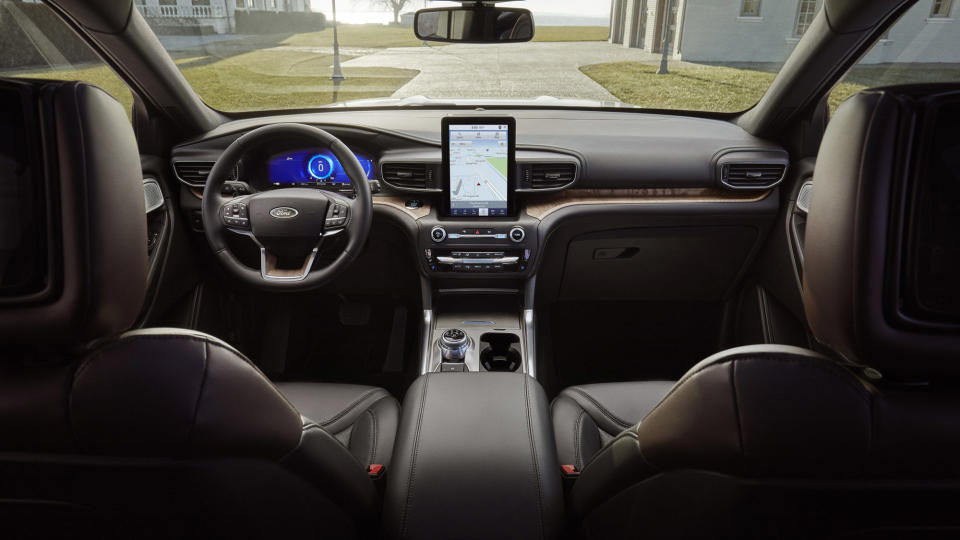
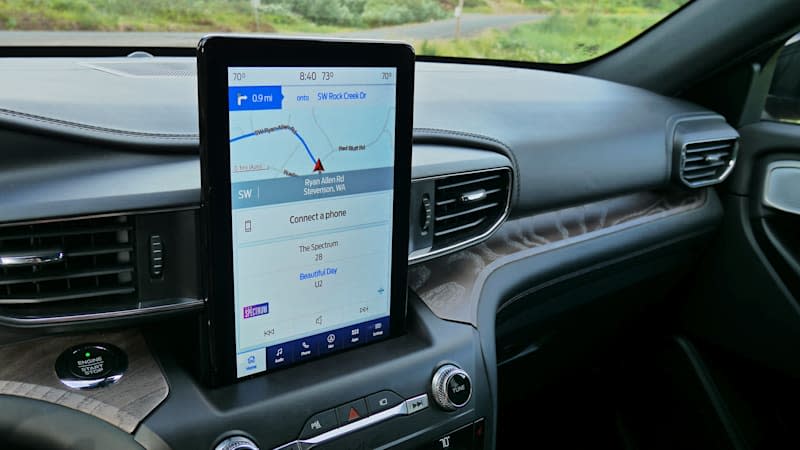
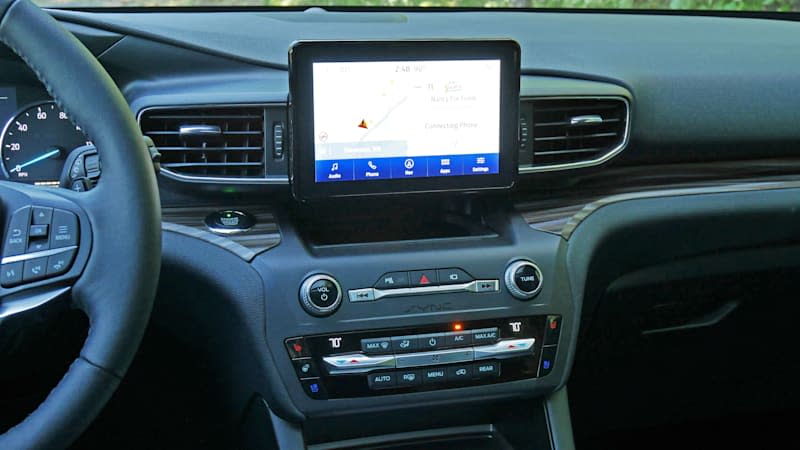
What's the Explorer's interior and in-car technology like?
The new Explorer offers a more stylish cabin than what you'll find in the more utilitarian Honda Pilot and Subaru Ascent, although the new Kia Telluride and Hyundai Palisade manage to exude more premium vibes. That's even the case with the wood- and leather-lined Explorer Platinum. The unremarkable quality of plastics inside the Explorer are a letdown.
One potential downside is a lack of USB ports for rear passengers. While the Telluride and Palisade provide two ports in each of the rear rows, the Explorer has only one for second-row passengers and none for those in the third. We do like the wireless charging pad placed horizontally against the under-armrest bin, though, as well as the expansive covered bin that houses the two front USB ports. There's also another smartphone-friendly bin underneath the 8-inch touchscreen.
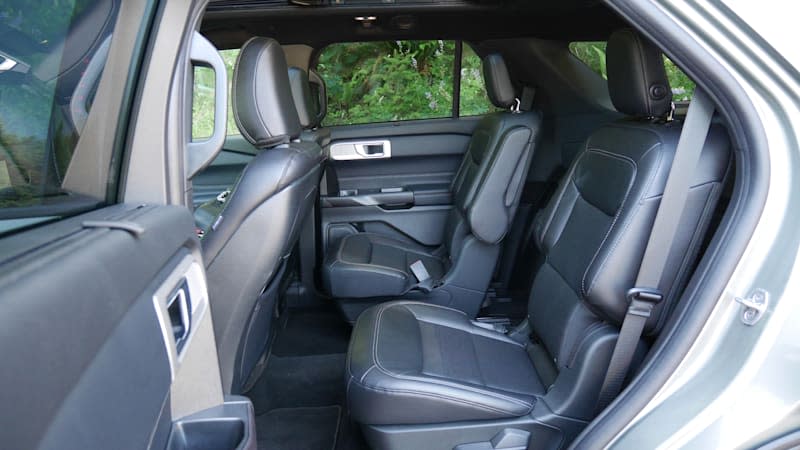
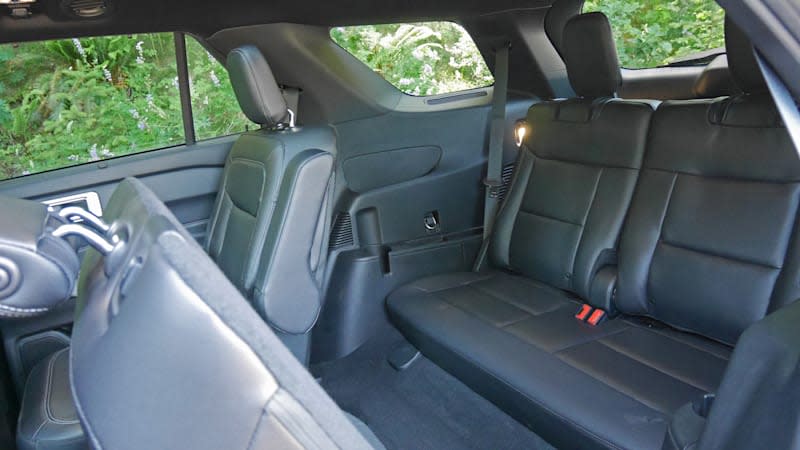
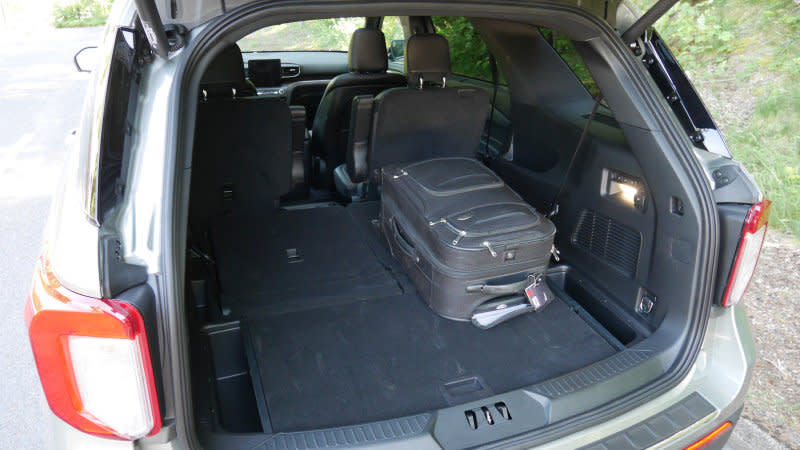
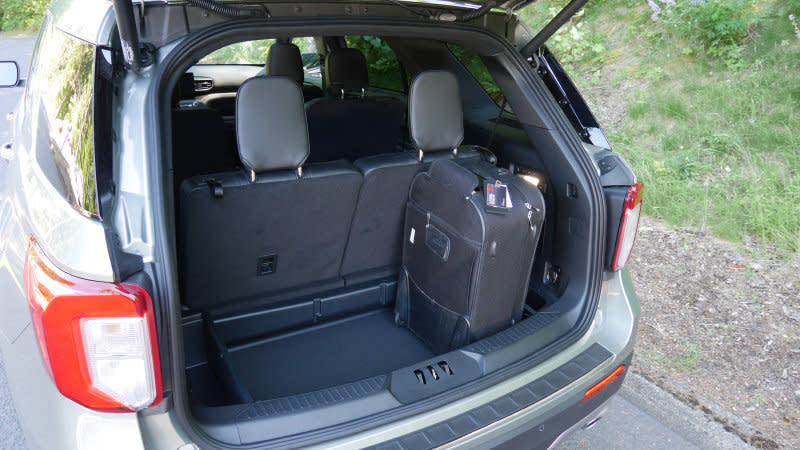
How big is it?
The 2020 Explorer is larger than both its predecessor and most competitors. At 198.8 inches long, only the gargantuan Chevy Traverse is larger. Thankfully, it doesn't feel that big when behind the wheel.
Inside, the Explorer's dimensions indicate it has more second- and third-row legroom than all of its three-row competitors except the Traverse. However, in person we've found it to be less spacious than its dimensions would indicate, especially in the third row. While there's tons of headroom back there, it's largely the result of a low-mounted seat. So while there's literally more space between rows, your passengers (even kids) are less likely to be comfortable since their butts will be too close to the ground and their legs less supported.
The cargo area is as good as its dimensions would indicate, however. Thanks to a removable floor panel, there is more space behind the raised third row than any competitor. The differences in maximum cargo space (all rows lowered) between competitors are negligible, but those extra cubes behind the way-back could mean the difference between bringing all your luggage, buying a roof box or making someone sit with a duffle bag on their lap for three hours.
What's the Explorer's performance and fuel economy?
Here is where the 2020 Ford Explorer really shines. Standard on the base, XLT and Limited trims is a 2.3-liter turbocharged inline-four that produces 300 horsepower and 310 pound-feet of torque. That's considerably better than the naturally aspirated V6 engines found in most competitors. A 10-speed automatic and rear-wheel drive are standard, but an all-wheel-drive system is optional. Fuel economy matches the current segment best with rear-wheel drive: 21 mpg city, 28 mpg highway and 24 mpg combined. It lowers to an equally competitive 20/27/23 with AWD.
Standard on the Platinum is a 3.0-liter turbocharged V6 good for 365 hp and 380 lb-ft of torque – that blows away anything offered by a competitor apart from the V8-powered Dodge Durango. That doesn't come close to the Platinum's fuel economy, however, which is 18/24/20 with standard all-wheel drive. It too has a 10-speed automatic.
The Explorer ST gets an enhanced version of the same engine good for 400 hp and 415 lb-ft of torque. Ford says it'll go from zero to 60 mph in 5.5 seconds, which is certainly quick, but not as quick as we'd expect given its power and the performance of certain competitors. Fuel economy was not announced at the time of this writing.
Finally, the Explorer Hybrid pairs a 3.3-liter naturally aspirated V6 to an electric motor and a lithium-ion battery pack under the passenger-side cabin. Its total output is 318 hp. EPA-estimated fuel economy stands at 27 mpg city, 29 mph highway and 28 mpg combined with rear-wheel drive. It lowers to 23 mpg city, 26 mph highway and 25 mpg combined with all-wheel drive. This is admittedly underwhelming as according to those same EPA estimates, you'd only save about $100 on average per year by going with the hybrid instead of the standard engine. Also, for comparison, the all-wheel-drive 2019 Toyota Highlander Hybrid gets 28 mpg combined with the 2020 model expected to do even better.
That said, Ford has put a priority on performance, even with the hybrid. You can see that with towing capacity, which stands at 5,000 pounds for the Hybrid. The Highlander can only manage 3,500 pounds. For the non-hybrid Explorers, towing goes up to 5,300 for the 2.3-liter and 5,600 for the 3.0-liter engines. Both figures are better than average for the segment.
What's it like to drive?
Not surprisingly, the Explorer's driving feel differs depending on engine and drivetrain choice. Acceleration is strong in the base engine and we don't think you'll miss having a V6. Of course, acceleration is laugh-enducingly rapid with the Explorer's turbo V6 upgrades, but they come at such a high cost that most potential buyers will find them largely a moot point. Luckily, we found a rear-wheel-drive, four-cylinder XLT to exhibit greater agility and eagerness to change direction than the more powerful Platinum. Having a lighter engine over front wheels unburdened by drive shafts tends to do that. Now, we wouldn't go so far as to call any of the non-ST models sporty – the suspension is a little too springy and the steering too uncommunicative for that – but it nevertheless provides a little more driving verve and connection than is usual for the segment.
The ST indeed steps things up with greater suspension composure, while not ruining the ride. The steering doesn't improve, though, and in general, we found the ST to be too big and heavy to be considered a true performance vehicle. It's also not quite over-the-top enough to match the joyously absurd Dodge Durango SRT.
The Hybrid, meanwhile, impresses with its refinement, performance and lack of drivability tradeoffs. That said, as we don't know its fuel economy at the time of this writing, it's hard to ultimately judge it.

 Yahoo Autos
Yahoo Autos 

